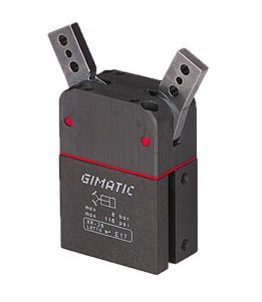Production line set-ups convey products that are eggshell-fragile. Glass or resin-plastic parts can’t leave an automation line with scratches or cracks, after all. Regrettably, that’s exactly what happens on a less than optimised assembly line. Rejection rates soar, manufacturer expenses become unmanageable, and contracts are lost. Gimatic grippers solve such headaches by providing human-like parts-handling dexterity. Here are a few tools we believe will back up this assertion.
Manipulating Minuscule Components
On smartphones, owners can’t even see product seams anymore. They’re invisible and built to deliver superior ingress protection. It’s the same with other portable electronic devices, which are built from the smallest, most fiddly bits of circuit-integrated hardware. Note, we’re using this industry as a case study because Gimatic grippers have spread wide across this sector. For instance, MXPM electric grippers deliver two-jaw parallelism, and that function incorporates a helpful self-centring feature. Blessed with essential small-parts manipulating features, including 0.02-mm repetition accuracy, the gripper retention jaws glide snugly around delicate components, automatically assemble the parts, and convey them to their destination, be it another end-arm gripper or the product output deck.
Electrically and Pneumatically Expedited Product Assembly
Desirable features on an automated production line include angular gripper retention, as expressed by the MPBS line. Spring-loaded jaw strokes seize awkwardly shaped items here, even ones that are cylindrical shaped. Magnetic sensor slots and feedback electronics assure a firm grip, so there are no traction notches left on the parts when they’re handled. Again, they sense correct component handling forces just like a dexterous human hand. Back at a pneumatically actuated product assembly line, the Gimatic grippers’ catalogue seems to swell ever larger. There are parallel and angular variants, including the diminutive GS-10 range of air-powered parallel parts grippers. Expanding the tooling range, radial grippers swing their profile-grasping elements angularly while expansion grippers increase their balloon-like diameters to gently grasp cylindrical items.
There are multiple performance-oriented tables and graphs printed under every Gimatic gripper’s image. Descriptions of jaw strokes and maximum/minimum torques fill the datasheets. Without a doubt, the information pushes the branded end-tool gripping implements to the top of their various product lines. More importantly than even those top-tier features, however, Gimatic tools perform as autonomous prodigies in the most daunting situations. When an assembly line is packed with equipment parts, the grippers pirouette and move like they have access to muscle memory. Last of all, though, the tools mount to their linearly and angularly moving arms, to articulating and unfolding limbs, effortlessly. Mounted solidly, the jaws and self-centring mechanisms adjust automatically to match every limb action.
For more information visit our Gimatic page, range of downloadable catalogues or contact us.


